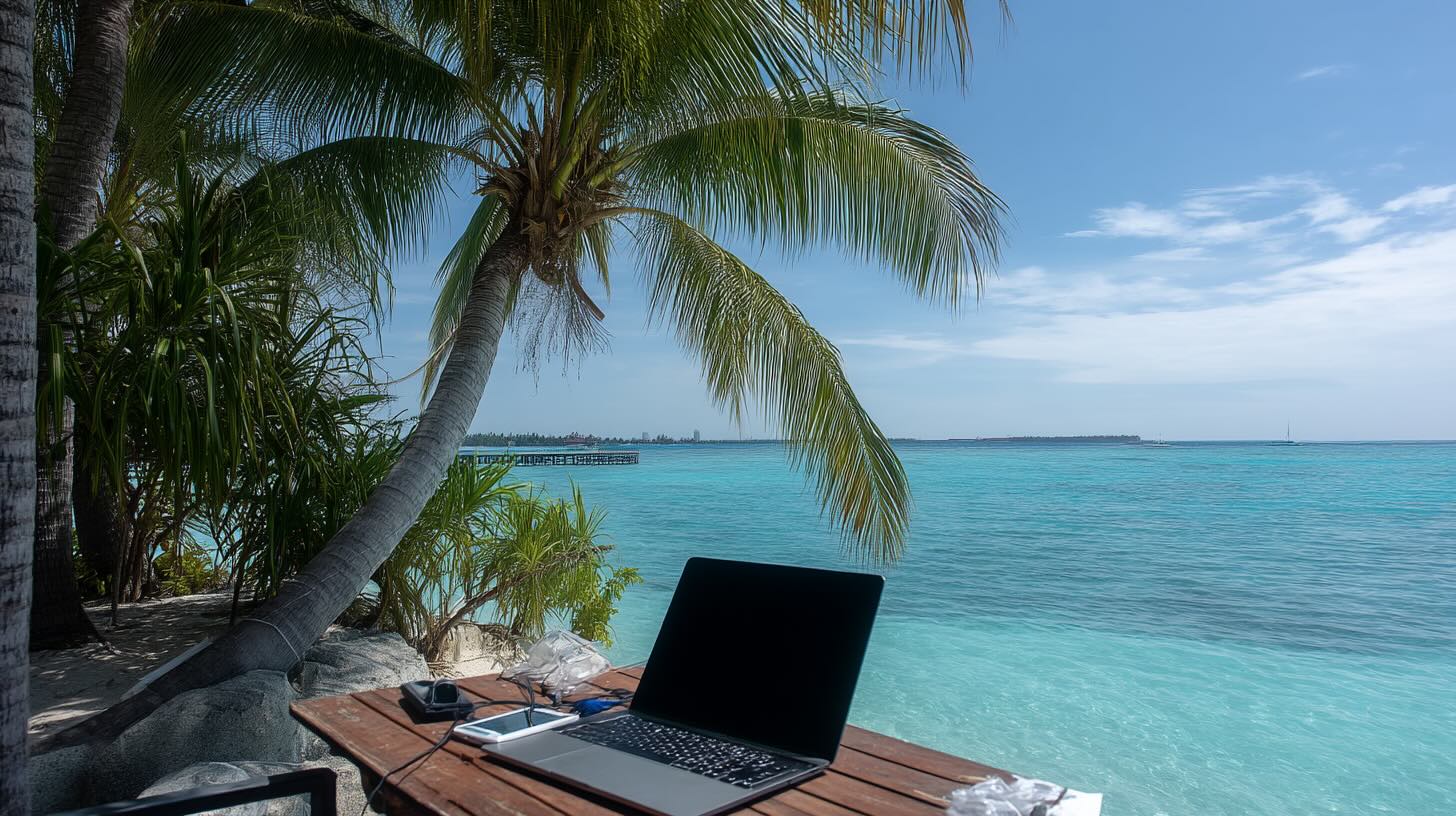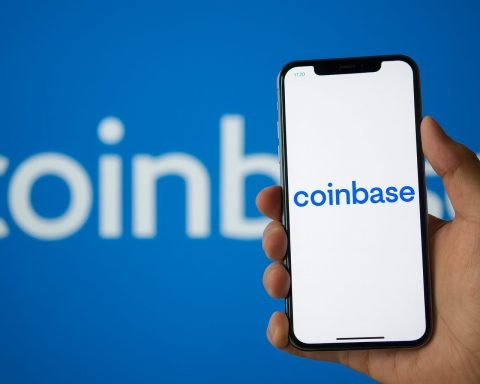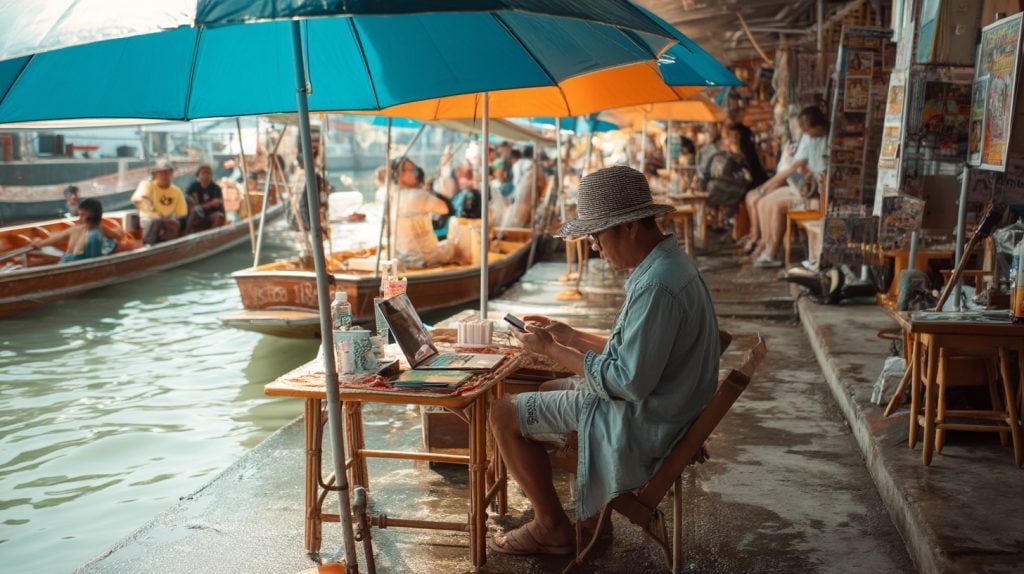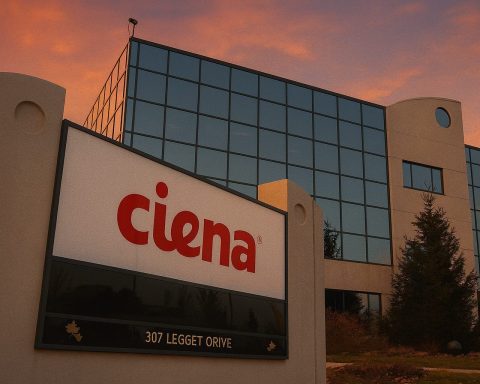- Dhiraagu (Dhivehi Raajjeyge Gulhun) was established in 1988 as the Maldives’ first telecom operator and former state monopoly.
- By 2000, basic telephone service had reached all inhabited islands and dial-up internet was available nationwide.
- In 2003 Focus Infocom received a second ISP license, and in 2005 Wataniya (Ooredoo Maldives) entered mobile service, ending Dhiraagu’s 17‑year monopoly.
- The Maldives’ telecom market is a duopoly dominated by Dhiraagu and Ooredoo, with Dhiraagu posting about MVR 2.8 billion revenue in 2019 and Ooredoo about MVR 2.03 billion, and Dhiraagu is 52% owned by Batelco and roughly 42% by the Maldivian government.
- 2G service arrived in the late 1990s and 3G networks were deployed across all populated islands in the 2000s.
- 4G LTE launched around 2013, and by the late 2010s 4G covered all inhabited islands, while Ooredoo deployed a 1200 km nationwide submarine cable in 2016.
- The fixed broadband shift moved from DSL to nationwide fiber, with Ooredoo’s SuperNet FTTP reaching over 40 islands by the end of 2018 and Dhiraagu announcing 100% fiber coverage to all inhabited islands in January 2025.
- As of early 2024 there were about 95,000 fixed broadband subscriptions (roughly 18% of the population), with median speeds around 11.4 Mbps download and 11.3 Mbps upload, rising to about 42 Mbps average download by March 2025.
- In August 2023 the Maldives licensed Starlink as the country’s fourth ISP, offering satellite broadband with speeds up to 100–200 Mbps per user at about $100 per month plus equipment.
- SEA-ME-WE 6 landed in the Maldives in August 2024, giving 100 Tbps capacity and is planned to go live by early 2026, with Dhiraagu as a co-owner of the cable.
Overview: Connecting a Nation of Islands
The Maldives is a geographically dispersed nation of around 1,200 islands (about 200 inhabited) spread across the Indian Ocean. Providing telecom and internet access to this archipelago has been a significant challenge historically. The country’s telecom journey began with a state monopoly: Dhiraagu (Dhivehi Raajjeyge Gulhun) was established in 1988 as the Maldives’ first and sole telecom operator [1]. By the year 2000, basic telephone service reached all inhabited islands, and dial-up internet was available nationwide (albeit sparsely) [2]. In the early 2000s, the government liberalized the sector to introduce competition and improve services. A second ISP license was issued in 2003 to Focus Infocom, breaking Dhiraagu’s internet monopoly [3]. In 2005, a second mobile operator entered the scene – Wataniya (later rebranded as Ooredoo Maldives) – ending Dhiraagu’s 17-year monopoly on mobile services [4]. These steps set the stage for rapid expansion of telecom infrastructure across the islands.
Today the Maldives enjoys a modern telecom infrastructure that belies its small size and challenging geography. High-capacity submarine fiber optic cables link the atolls to international internet backbones, and domestic undersea cables plus microwave links connect even the most remote islands. Mobile phone penetration exceeds the population (over 130% by 2020, owing to tourists and multiple SIM usage) [5], and internet penetration stood at about 84% of the population in 2024 [6]. However, the path to this connectivity hasn’t been easy – it required decades of investment in undersea cables, satellite links, and now cutting-edge wireless networks to reach far-flung atolls. The result is that Maldivians, whether in the capital Malé or on a tiny coral isle, can access voice and data services that are increasingly on par with global standards.
Major ISPs and Market Landscape
The Maldives’ telecom market is essentially a duopoly, dominated by two main providers, with a couple of smaller players in niche roles [7]:
- Dhiraagu – The former incumbent remains the largest telecom and internet provider. It is 52% owned by Bahrain’s Batelco and ~42% by the Maldivian government [8]. Dhiraagu offers mobile, fixed broadband, and other ICT services nationwide. It has historically led in subscriber numbers and revenue, reporting MVR 2.8 billion revenue in 2019 [9]. Dhiraagu was the sole operator until 2005 and leveraged that head start to build extensive infrastructure (like a 1,253 km domestic fiber-optic network linking the length of the country [10]). It continues to hold a slight edge in market share and has won awards for network performance (e.g. “Fastest Mobile Network” in 2022) [11].
- Ooredoo Maldives – Launched in 2005 (as Wataniya), Ooredoo is the Qatari-backed competitor that rapidly caught up to Dhiraagu. Ooredoo invested heavily in new technologies and was an early mover in 3G, 4G, and even 5G services [12] [13]. By 2019, Ooredoo’s annual revenues (around MVR 2.03 billion) were approaching Dhiraagu’s [14], reflecting its substantial market share. Ooredoo has focused on innovation and customer engagement to chip away at Dhiraagu’s lead [15]. Together, Dhiraagu and Ooredoo account for the vast majority of internet and mobile subscriptions in the Maldives, essentially controlling the market as a duopoly [16].
- Focus Infocom (Raajjé Online) – A smaller ISP that entered in 2003, Focus Infocom operates the Raajjé Online (ROL) service, which was the nation’s second internet provider [17]. It offers fixed broadband (fiber and wireless) to homes, businesses, and resorts, and prides itself on being 100% locally owned [18]. ROL introduced cable modem and wireless broadband in the 2000s and has since upgraded to fiber in many areas. Its market share is modest compared to the big two, but it provides a competitive alternative for fixed internet in Malé and some islands. (According to one ranking, Focus Infocom is the 4th largest ISP by speed test results, indicating at least a niche presence [19].)
In addition to the above, the Maldives in 2023 licensed Starlink as a new player (discussed later), making it effectively the fourth ISP [20]. Other than these, there are no other major independent ISPs – the market is tightly regulated and concentrated, with the government keen to maintain widespread access via a few strong operators. The duopoly structure has at times kept prices high and competition limited, which the government has addressed through regulation (such as forced price cuts in 2021) [21]. Overall, Dhiraagu and Ooredoo form the backbone of Maldives’ internet access, with smaller providers filling gaps in specific segments.
Mobile Networks: 2G, 3G, 4G, and 5G Coverage
Mobile connectivity is the primary means of internet access for most Maldivians, and coverage has expanded to virtually the entire country. Between Dhiraagu and Ooredoo, comprehensive mobile network coverage reaches nearly 100% of the Maldives’ inhabited islands [22]. Key developments in mobile network generations include:
- 2G (GSM): Dhiraagu introduced GSM services in the late 1990s, bringing basic mobile voice/text to the capital and larger atolls. GSM on 900 MHz was gradually extended so that by the mid-2000s, every inhabited island had at least basic 2G coverage [23]. To this day, 2G signals serve remote areas and act as fallback coverage.
- 3G (WCDMA/HSPA): Third-generation mobile service arrived in the Maldives in the 2000s. Ooredoo claims it launched the first 3G network in the country, offering mobile data (video calling, early mobile internet) at broadband speeds [24]. Both operators now have 3G UMTS networks (2100 MHz) covering all populated islands [25]. 3G provided the first taste of internet-on-the-go beyond slow dial-up, and it remains an important layer, especially for islands not yet upgraded to 4G or during network congestion.
- 4G (LTE): Fourth-generation LTE service debuted around 2013, dramatically improving mobile data speeds. Both Dhiraagu and Ooredoo rolled out 4G starting in Malé and tourist hubs and then across the atolls [26]. They utilize bands 3 (1800 MHz), 7 (2600 MHz), and 1 (2100 MHz) to extend LTE coverage. By the late 2010s, 4G LTE covered all inhabited islands and even many resort islands [27]. This was possible thanks to a robust national infrastructure: Dhiraagu connected the country north-to-south with a fiber-optic backbone and microwave links to base stations [28], while Ooredoo deployed a 1200 km nationwide submarine cable network in 2016 to carry data between islands [29]. With 4G, most Maldivians could finally experience online services like video streaming and social media with decent speeds outside the capital.
- 5G: The Maldives was an early adopter in South Asia of fifth-generation mobile technology. Dhiraagu launched the first commercial 5G service in the Maldives (and South Asia) in 2019 on a limited basis in Malé [30] [31]. Ooredoo followed with a 5G launch in select areas of Greater Malé by December 2020 [32]. As of 2022, Ooredoo had expanded 5G to cover the Greater Malé Region (Malé, Hulhumalé, Vilimalé) and introduced AirFibre 5G broadband for homes [33]. Dhiraagu and Ooredoo both continue to broaden their 5G footprints; Ooredoo even announced a “nationwide 5G rollout” plan [34], though in practice 5G is currently limited to urban zones and key public areas. Where available, 5G delivers impressive speeds – Dhiraagu’s 5G users saw a median download speed of about 237 Mbps in 2024 [35]. While 5G is still nascent in the outer atolls, the groundwork is laid for future expansion as demand grows.
Overall, the Maldives’ mobile network experience is quite robust. A recent analysis found the two operators in a tight race on performance: Ooredoo led in 4G coverage and consistency, while Dhiraagu led in speed metrics [36]. Mobile coverage extends even to remote islets that have no road or power infrastructure – solar-powered cell towers and microwave backhaul keep these communities connected. Travelers between islands can generally expect continuous coverage, and even on the open seas around resort islands, signals are often present. This pervasive mobile reach has been a game-changer for the Maldives, enabling everything from mobile banking in villages to real-time coordination of fishing fleets.
Fixed Broadband: From DSL to Nationwide Fiber
In the fixed broadband arena, the Maldives has made huge strides from dial-up days to now achieving fiber-optic connectivity on every inhabited island. Early internet in the 1990s was dial-up over phone lines, and by the early 2000s Dhiraagu introduced ADSL (DSL broadband) in the capital Malé [37]. Cable broadband and Wi-Fi hotspots were offered by Focus Infocom (ROL) on a small scale in Malé around the same time [38]. However, these technologies had limited reach beyond the largest population centers.
Fiber-Optic Broadband: In the 2010s, both major operators began aggressive fiber rollouts. Dhiraagu and Ooredoo ran submarine and terrestrial fiber cables across the atolls to link islands. Ooredoo’s “SuperNet” FTTP (Fiber-to-the-Premises) network extended high-speed fiber broadband to over 40 islands by the end of 2018 [39]. Dhiraagu likewise upgraded its fixed network in Malé and started connecting islands via fiber and fiber-microwave hybrids [40]. A landmark achievement came in January 2025 when Dhiraagu announced it had extended fiber broadband service to all inhabited islands in the Maldives [41]. This makes the Maldives one of the few countries in the world able to claim 100% fiber coverage to all population centers [42]. In practical terms, residents on any inhabited atoll can now get a fiber-optic internet connection (often FTTH) with speeds in the tens or hundreds of Mbps.
Older Technologies (DSL, Cable, Wireless): As fiber rolled out, legacy DSL has been largely phased out or limited to areas pending fiber upgrade. In the capital region, Dhiraagu had fully upgraded the fixed network from old copper DSL to fiber by late 2010s [43]. Cable broadband (via coaxial cable TV networks) was never widespread beyond perhaps Malé – the largest cable TV provider, Medianet, focused on TV and did not become a major ISP. Instead, fixed wireless broadband filled some gaps: both Dhiraagu and Ooredoo offer home broadband over 4G/5G networks for areas without fiber. For example, Ooredoo’s AirFibre 5G service allows home internet over 5G wireless with speeds of 100+ Mbps in Greater Malé [44]. Similarly, 4G routers with large data packages (marketed as “LTE Broadband”) are used in smaller islands where running fiber to each home is still ongoing. These wireless solutions have been critical in remote atolls and resort islands, some of which relied on 4G as their main broadband until fiber reached them.
The fixed broadband subscriber base, while smaller than mobile, is growing quickly thanks to fiber. As of early 2024, there were around 95,000 fixed broadband subscriptions in the Maldives (roughly 18% of the population, including home and business connections) [45] [46]. Fiber connections make up the bulk of new subscriptions, as operators push high-speed unlimited plans to replace older ADSL and limited wireless plans. With fiber in place countrywide, even sparsely populated islands can in theory access the same quality of internet as the capital – a remarkable turnaround from a decade ago when many atolls had to rely on spotty satellite or dial-up links.
Internet Speeds and Costs
Despite its small size, the Maldives now punches above its weight in mobile internet speeds – but its fixed broadband speeds still lag behind global averages. According to Ookla’s Speedtest data, the Maldives ranked 33rd in the world for mobile download speed in early 2025 [47]. Median mobile speeds are around 73 Mbps download [48], which reflects the widespread 4G and emerging 5G use. In fact, in the first half of 2024 Dhiraagu’s 5G users saw median downloads of 236.7 Mbps (and ~27 Mbps upload) [49]. Even on 4G, typical download speeds of 20–40 Mbps are common in populated areas. This means mobile users in the Maldives can stream HD videos, participate in video calls, and use data-heavy apps with relative ease – a significant achievement for a tropical island nation.
On the other hand, fixed broadband speeds have been comparatively low, though improving with fiber. In 2024 the median fixed broadband download speed was only about 11.4 Mbps (upload ~11.3 Mbps) [50]. This placed the Maldives around 136th globally for fixed internet speed [51]. However, that figure is rising as old DSL lines are replaced; indeed, by March 2025 the Speedtest Global Index showed a jump to ~42 Mbps average download on fixed broadband [52]. The historically slow fixed speeds were partly due to limited bandwidth on older international links and the high cost of backhaul outside Malé. With new infrastructure (like the nationwide fiber and new submarine cables), fixed-line customers should see speeds climb to parity with mobile. Some users already subscribe to premium fiber packages at 100 Mbps or higher, though these are currently expensive.
Cost of Internet: Internet access in the Maldives has tended to be expensive relative to income, given the high infrastructure costs and duopoly market. The government recognized this and in 2021 pressured operators to cut prices by 20–30% [53]. Today, prices have improved but are still not cheap. For example, as of 2023 Dhiraagu’s home fiber plans included a 20 Mbps package for about MVR 550 (≈USD $35) per month [54], and a 50 Mbps Unlimitedfiber plan for MVR 1490 (~$95) per month [55]. Ooredoo’s rates are similar, with a 30 Mbps unlimited plan around MVR 700 and 100 Mbps for ~MVR 1449 [56]. Data-capped plans are available at lower prices (e.g. 80 GB mobile broadband for MVR 699, or ~$45 [57]), but heavy users often complain of high bills. When measured as a share of income, Maldivians were spending well above the UN recommended 2% of monthly income on broadband; even after recent cuts, it was estimated around 2.6% of income goes to internet access on average [58]. This makes the Maldives one of the pricier places in Asia for data, especially for high-speed fixed service.
That said, the increased competition and new entrants are expected to drive costs down. The introduction of unlimited fiber packages (a relatively new development) is a positive sign [59]. Tourists, who often purchase local SIMs or use resort Wi-Fi, also note the high prices – a tourist SIM with a few GB of data can cost USD $30+. The government’s policy is to keep pushing prices lower so that internet access is affordable to all citizens in line with its Telecommunications Act [60]. We may see further price reductions or budget plans introduced, especially once the new international cable (SMW6) increases bandwidth (potentially lowering wholesale costs). In summary, Maldivians enjoy fast mobile internet and improving fixed speeds, but they pay a premium for this connectivity, which remains a barrier for some low-income households.
Satellite Internet: Starlink and Beyond
Given the Maldives’ dispersed geography, satellite internet is a natural solution for reaching remote locations – from solitary islands to ships at sea. Traditionally, resorts and remote enterprises relied on VSAT satellite links (e.g. services like Thuraya or Intelsat) when undersea cables or microwave links were unavailable [61]. However, satellite bandwidth was limited and very costly, so it never became widespread for the general population. This is now changing with the advent of low-earth orbit satellite constellations.
In August 2023, the Maldivian government granted an ISP license to Starlink, Elon Musk’s satellite internet service, marking a significant milestone in connectivity [62] [63]. Starlink Services Maldives (SpaceX’s local subsidiary) was licensed as the country’s fourth ISP, alongside Dhiraagu, Ooredoo, and Focus Infocom [64]. This authorization allows Starlink to provide satellite broadband to all regions of the Maldives, including the most remote islands and seafaring vessels [65]. At a ceremony in 2023, the Minister of Technology hailed Starlink’s entry as a way to ensure “high-speed internet access will be available to all parts of the country as well as sea faring vessels,” thereby improving lives and boosting the economy [66]. Essentially, Starlink can blanket the entire Maldives with coverage from space, something no terrestrial network can match 100% (especially for boats or very isolated spots).
As of early 2024, Starlink was gearing up for commercial availability in the Maldives. The service is expected to offer speeds up to around 100–200 Mbps per user with a monthly cost in the range of $100 (plus equipment) [67]. This is steep by local standards, meaning Starlink may initially target resorts, businesses, and yachts that need reliable backup connectivity or service in areas not reached by fiber. It can also be a resilience tool – for example, if a cyclone or undersea quake cuts submarine cables, Starlink could keep the nation online. Regulations for user terminals (dishes) are being ironed out by the Communications Authority, but given Starlink’s licensure, individuals and companies will be legally allowed to use it.
Aside from Starlink, other satellite options include legacy GEO satellites (still used by some resorts for redundancy) and potential newcomers like OneWeb or SES’s O3b mPOWER (if they pursue Maldives market entry). The government’s openness to Starlink suggests a generally pro-technology stance, leveraging satellite to complement the fiber and mobile networks. We might see public institutions in outer atolls getting Starlink units as a backup or to increase capacity. In short, satellite internet is poised to play a supporting but important role – not replacing ground networks, but filling the gaps where needed. For a fishing boat out at sea or a research station on a remote isle, the stars (or rather Starlink satellites) will soon provide a direct link to the global internet.
Regulation, Government Policy, and Internet Censorship
Telecommunications in the Maldives are overseen by the government through the Communications Authority of Maldives (CAM) and governed by the Maldives Telecommunications Act. The law mandates that telecom services be accessible to all at reasonable cost, and it empowers CAM to regulate prices and ensure a competitive environment [68]. In practice, the government has actively intervened at times to align the industry with national goals. A notable example was in 2021 when the administration directed operators to implement substantial price reductions on broadband (20–30% cuts) to improve affordability [69]. This kind of regulatory action is driven by concerns that the duopoly might keep prices high; indeed the state itself benefits from telecom profits (as a shareholder and tax collector), which historically made it somewhat cautious in pushing price drops [70]. However, pressure from the public and international benchmarks (like UN affordability targets) has led to more pro-consumer policies recently.
In terms of internet governance, the Maldives generally enjoys a moderate level of internet freedom, but with some important restrictions. The country does not have nationwide pervasive censorship of the internet – popular global platforms (Google, Facebook, YouTube, etc.) are available, and people can and do criticize the government online. However, the state has shown it will block or filter content that crosses certain lines, particularly in regards to religion and political dissent. For instance, the Ministry of Islamic Affairs has in the past ordered CAM to block websites deemed anti-Islamic. A high-profile case was in 2011 when a local blogger’s site was shut down for “anti-Islamic material” [71]. Pornography and explicit adult content are also commonly filtered as they violate local laws and social norms in the Muslim-majority nation.
Around sensitive political periods, authorities have resorted to targeted censorship. In late 2023, during a turbulent transition after elections, CAM blocked two independent news websites that were critical of the government [72]. This move sparked outrage among civil society and was reversed after a few days due to public pressure and condemnation by rights groups [73]. Similarly, reports indicate that internet or social media access has occasionally been throttled or restricted during opposition protests or emergencies (though such incidents are relatively rare). Maldives usually ranks as “partly free” on internet freedom indices – there is a vibrant online sphere, but with red lines that the state enforces in the name of religion, security, or public order [74].
On the policy front, the government has embraced a vision of a “Digital Maldives” and “Smart Nation” as part of its development strategy. This includes e-government services, digital ID for citizens, cybersecurity initiatives, and promoting ICT literacy. A National Cybersecurity Agency was established to guard against cyber threats as internet usage grows [75]. The regulatory stance is to encourage investment in infrastructure (often through public-private partnership, e.g. allowing foreign telcos like Ooredoo, or financing submarine cables via development banks) while keeping the market limited enough to ensure viability. The recent licensing of Starlink shows a pragmatic approach to improving access through new technology. Overall, Maldivian authorities aim to leverage the internet for economic and social development, but they continue to police content that conflicts with religious statutes or threatens political stability.
Bridging the Digital Divide: Urban vs. Remote Atolls
Connecting a small capital city like Malé is one thing; connecting tiny islands with just a few hundred people scattered over 800 km of ocean is another. The digital divide between urban hubs and remote atolls has long been a concern. In the past, residents of remote islands had far slower and costlier internet – if they had access at all – compared to those in Malé. This gap stemmed from the high cost of linking isolated communities and the lower incomes in those areas. Many outer atoll communities also had lower digital literacy, with fewer people owning computers or knowing how to use online services (a 2007 survey found PC ownership in atolls was barely 1%, versus ~22% in Malé at that time). As a result, the early internet revolution largely bypassed rural islands, creating a classic urban-rural digital divide.
In recent years, concerted efforts have been made to close this gap. The government and telecom companies prioritized extending coverage to every inhabited island. By 2016, both Dhiraagu and Ooredoo had mobile towers on all inhabited islands (ensuring at least basic 3G/4G service everywhere) [76]. The completion of the nationwide fiber-optic network in 2025 is a game-changer for digital inclusion – it means even the smallest community now has the physical infrastructure for high-speed broadband [77] [78]. To leverage this, the government has included island connectivity in its development plans, often citing that broadband is essential for decentralizing economic opportunities and public services. Programs have been introduced to improve digital literacy in the atolls, such as setting up community eCenters and training youths in ICT skills (especially under initiatives like “Digital Raajje” and various UNDP projects). As President Muizzu noted in 2024, “universal telephone coverage and a variety of web applications and portals have brought critical services to the fingertips of all Maldivians, enhancing governance and citizen participation.” [79]. Services like telemedicine, e-banking, and e-learning are being rolled out so that islanders can access them if they have an internet connection.
Affordability remains the tougher aspect of the divide. While infrastructure might reach a remote island, if a family cannot afford the monthly fees, the connection is moot. To tackle this, the telecom providers have introduced cheaper entry-level packages and sometimes community Wi-Fi spots. The government could consider subsidies or a Universal Service Fund to help cover connectivity for low-income or remote users, though a formal program isn’t clearly established yet. The presence of mobile internet (which is more accessible in cost via prepaid data packs) has helped – many rural Maldivians use smartphones as their primary internet device, skipping PCs altogether. Social media and messaging apps are popular even on islands with only a few hundred people, showing that once coverage is there and some basic training, people quickly come online.
Today, the urban-rural digital gap is narrowing. Malé still enjoys the fastest speeds and the first taste of new tech (it was the first with fiber and 5G), but the outer islands are catching up. For instance, islands in Laamu or Haa Alif atoll now have fiber broadband options and 4G nearly as good as Malé’s. The fraction of Maldivians who remain offline (about 16% in 2024) [80] likely includes older individuals and those in the most remote areas, but that percentage is shrinking annually. As education and awareness spread, more island residents are using the internet for fishing market prices, e-commerce of local handicrafts, or simply staying in touch with family via WhatsApp. The Maldives’ goal of a digitally inclusive community is gradually becoming reality – turning far-flung islands into connected nodes of one national network.
Future Outlook: Toward a Connected “Smart” Paradise
The Maldives has ambitious plans to further enhance connectivity and become a “smart nation” leveraging digital technology. A cornerstone of future strategy is boosting international bandwidth and network resilience. In August 2024, a major milestone was the landing of the SEA-ME-WE 6 submarine cable in the Maldives [81]. SMW6 is a massive new submarine cable linking Singapore to Europe, and Dhiraagu joined the global consortium as a co-owner – the first time a Maldivian operator has co-owned an international cable [82]. This cable, due to go live by early 2026, will provide a 100 Tbps high-speed highway into the global internet for the Maldives [83]. Officials noted that SMW6 will give the Maldives direct access to multiple international exchange points without dependency on any single country [84] (currently Maldives connects via Sri Lanka and India on older cables [85]). The increased redundancy and capacity should lower the cost of internet services in the coming years and improve latency and quality [86]. In short, SMW6 and similar projects aim to turn this island nation into a regional digital hub rather than an endpoint.
On the domestic front, both major telcos will be looking to monetize and expand their newly built fiber networks. We can expect gigabit broadband offers to become more common for businesses and even households, especially in Malé and larger islands. The competition may shift increasingly to service quality and content bundling (for example, IPTV, smart home services, etc. are likely to grow on top of the broadband infrastructure). 5G expansion is certainly on the horizon – within the next few years, 5G coverage will move beyond the capital area to other key islands (like Addu City in the south, or some resort atolls that demand high bandwidth). Ooredoo’s stated goal of a nationwide 5G network implies eventually covering many islands, potentially via new spectrum or creative use of mid-band 5G that can extend farther. Given that 4G already reaches all inhabited areas, the groundwork for 5G upgrades is there; it’s mostly a matter of backhaul capacity (solved by fiber) and device uptake.
The government’s “Digital Maldives” initiative also focuses on using connectivity for public good. This includes plans for “smart islands” where IoT sensors and e-government solutions improve living conditions. For example, trials have been mentioned for drone delivery of medical supplies using 5G networks, smart traffic systems in the capital, and AI-powered environmental monitoring for climate adaptation [87] [88]. Such projects hint at a future where the Maldives not only has fast internet, but also uses it in innovative ways to overcome challenges of geography and climate. President Muizzu in 2024 highlighted that embracing digital innovation is key to Maldives’ development and even climate resilience [89] [90]. International partnerships (with organizations like the World Bank and ITU) are likely to bring in technical expertise and funds to implement these digital transformation projects.
In terms of new entrants, Starlink’s arrival is just the beginning – other satellite or regional telecom companies might seek a piece of the Maldivian market if growth continues. The government will balance this with ensuring the existing operators remain healthy (since they invest in local jobs and infrastructure). There is also talk of making the Maldives a hub for submarine cables – its strategic location means additional cables from the Middle East or East Asia could be landed here, further bolstering connectivity and even providing transit capacity to other Indian Ocean territories.
In conclusion, the Maldives’ internet access story has evolved from a tale of isolation to one of integration. From the first dial-up connections in Male’ cybercafés to islanders live-streaming on 5G and fiber, the progress is striking. Challenges like cost and rural inclusion are being addressed step by step. With strong political will and continued infrastructure investment (like SMW6 and nationwide fiber), the Maldives is poised to transform into a fully connected, smart island nation. This bodes well for its economy – enhancing tourism services, enabling remote work and education, and diversifying beyond fishing and resorts into digital industries. The once-remote atolls are now linked into the global village, as the Maldives rides the waves of the internet revolution into the future [91] [92].
Sources: The information in this report is backed by data and news from telecom authorities, industry reports, and recent news articles on Maldives’ connectivity (see citations). Key references include the Communications Authority of Maldives statistics, OpenSignal and Speedtest reports, press releases from Dhiraagu and Ooredoo, and analyses by organizations like the Asian Development Bank and Freedom House, among others.
References
1. mfr.mv, 2. www.itu.int, 3. www.itu.int, 4. en.wikipedia.org, 5. mfr.mv, 6. datareportal.com, 7. mfr.mv, 8. mfr.mv, 9. mfr.mv, 10. www.operatorwatch.com, 11. www.dhiraagu.com.mv, 12. en.wikipedia.org, 13. www.operatorwatch.com, 14. mfr.mv, 15. medium.com, 16. mfr.mv, 17. www.itu.int, 18. splynx.com, 19. splynx.com, 20. hoteliermaldives.com, 21. mfr.mv, 22. www.ookla.com, 23. www.leadingmarketresearch.com, 24. en.wikipedia.org, 25. www.leadingmarketresearch.com, 26. www.operatorwatch.com, 27. www.leadingmarketresearch.com, 28. www.operatorwatch.com, 29. www.leadingmarketresearch.com, 30. www.operatorwatch.com, 31. www.operatorwatch.com, 32. www.operatorwatch.com, 33. www.operatorwatch.com, 34. www.ooredoo.mv, 35. www.ookla.com, 36. www.operatorwatch.com, 37. www.itu.int, 38. www.itu.int, 39. www.leadingmarketresearch.com, 40. www.leadingmarketresearch.com, 41. atolltimes.mv, 42. atolltimes.mv, 43. www.leadingmarketresearch.com, 44. www.operatorwatch.com, 45. www.cam.gov.mv, 46. tradingeconomics.com, 47. www.speedtest.net, 48. datareportal.com, 49. www.ookla.com, 50. datareportal.com, 51. www.speedtest.net, 52. www.speedtest.net, 53. mfr.mv, 54. www.dhiraagu.com.mv, 55. www.dhiraagu.com.mv, 56. www.ooredoo.mv, 57. www.dhiraagu.com.mv, 58. mfr.mv, 59. www.dhiraagu.com.mv, 60. mfr.mv, 61. www.leadingmarketresearch.com, 62. corporatemaldives.com, 63. hoteliermaldives.com, 64. hoteliermaldives.com, 65. hoteliermaldives.com, 66. hoteliermaldives.com, 67. hoteliermaldives.com, 68. mfr.mv, 69. mfr.mv, 70. mfr.mv, 71. en.wikipedia.org, 72. en.wikipedia.org, 73. en.wikipedia.org, 74. en.wikipedia.org, 75. edition.mv, 76. www.leadingmarketresearch.com, 77. atolltimes.mv, 78. atolltimes.mv, 79. edition.mv, 80. datareportal.com, 81. edition.mv, 82. edition.mv, 83. edition.mv, 84. edition.mv, 85. www.leadingmarketresearch.com, 86. edition.mv, 87. edition.mv, 88. edition.mv, 89. edition.mv, 90. edition.mv, 91. edition.mv, 92. atolltimes.mv










